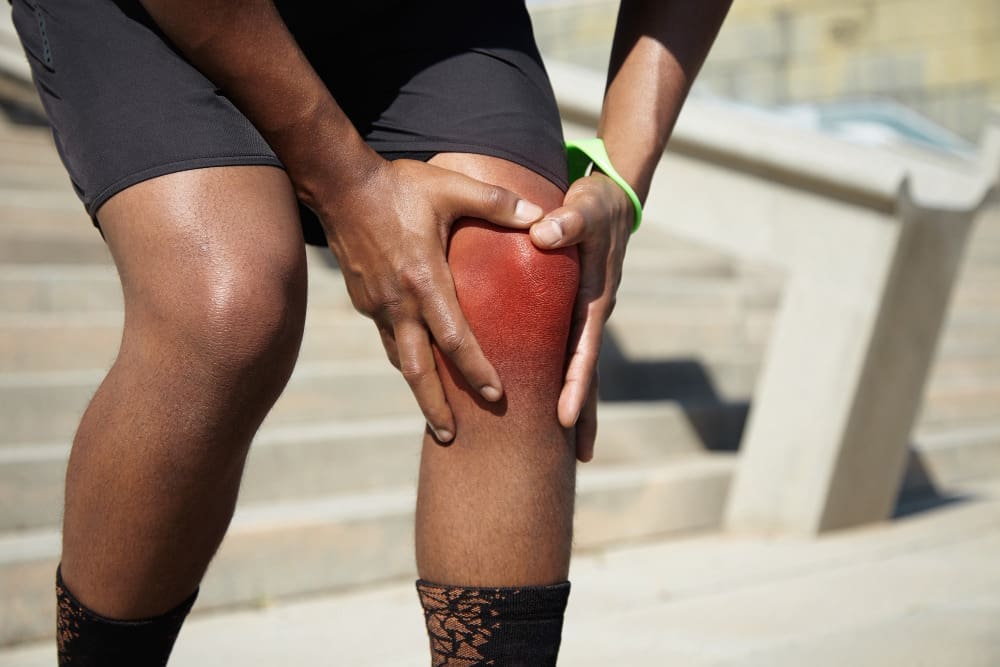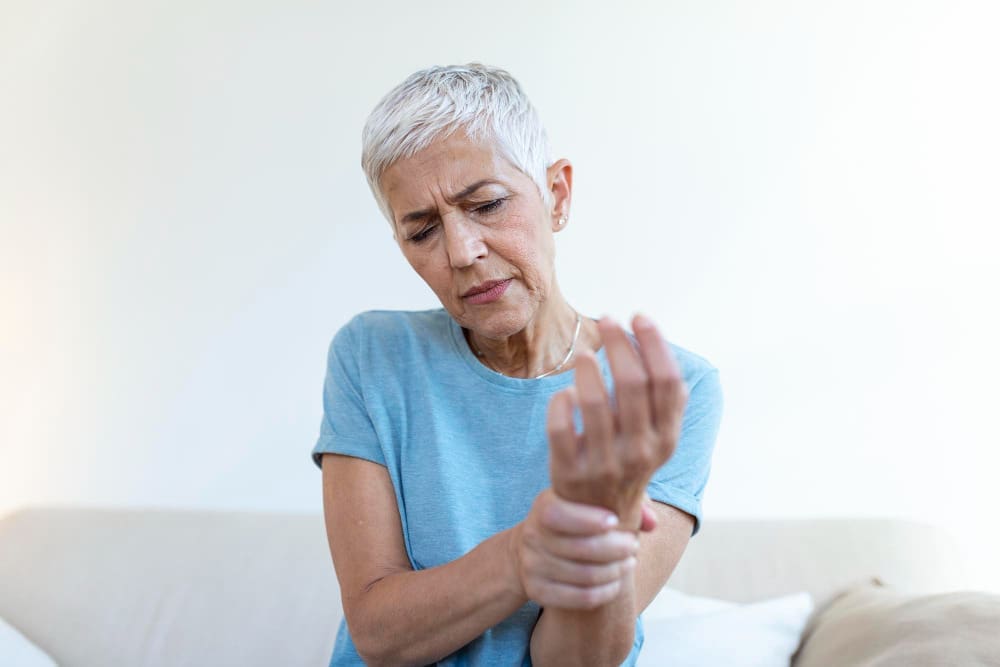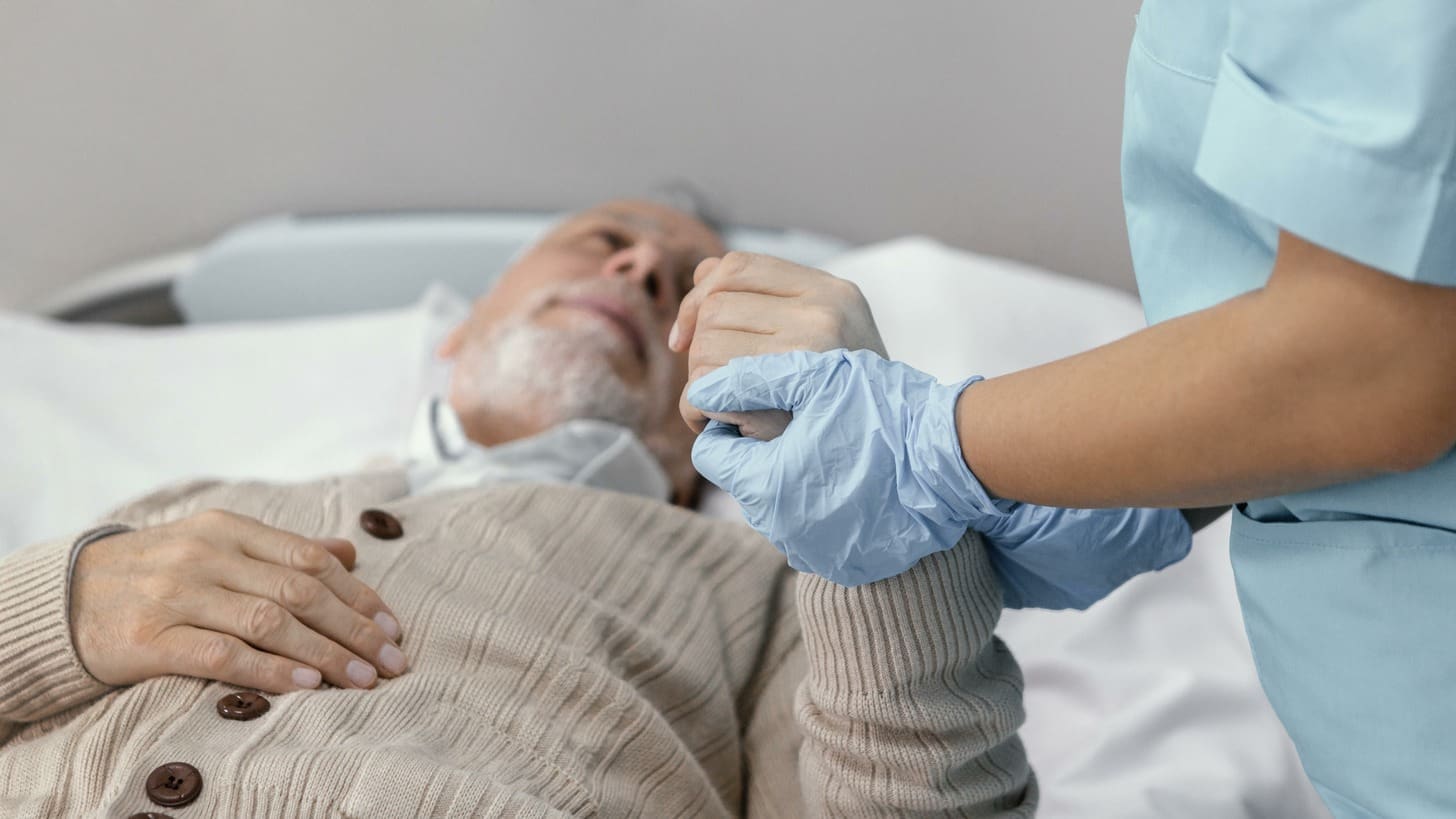Last Updated on November 27, 2025 by Bilal Hasdemir

Constant joint pain might not just be from age or strain. It could signal an autoimmune disorder. At Liv Hospital, we help people spot the key signs and symptoms of these conditions. This way, they can get the right help quickly.
Autoimmune conditions happen when the body’s immune system attacks its own tissues. These conditions often lead to joint pain, along with swelling and stiffness. We’ll look at 10 autoimmune diseases that cause joint pain, their signs, symptoms, and side effects.
It’s important to understand these conditions early. This can stop long-term damage. We’re dedicated to top-notch healthcare and support for everyone.
Key Takeaways
- Autoimmune conditions can cause persistent and symmetrical joint pain.
- Early diagnosis is key for managing autoimmune diseases well.
- Many autoimmune conditions have similar signs and symptoms.
- Getting help early can stop long-term damage.
- Liv Hospital offers full support for international patients.
Understanding Autoimmune Diseases That Cause Joint Pain
It’s important to know how autoimmune diseases and joint pain are connected. These diseases happen when the body’s immune system attacks its own cells and tissues. Many of these diseases cause pain, swelling, and stiffness in the joints.
What Are Autoimmune Diseases?
Autoimmune diseases happen when the immune system can’t tell the difference between self and non-self. This leads to an immune attack on the body’s own tissues. Common symptoms include fatigue, fever, rashes, and feeling unwell. For example, hormones like estradiol and estriol might help protect nerves in diseases like multiple sclerosis, as a recent study found.
Read more about this in a study on estradiol and estriol’s protective effects.
How Autoimmune Conditions Affect Joints
Autoimmune conditions can harm joints in different ways. They can cause inflammation, pain, and make it hard to move. The immune system’s attack on joints can damage the lining of the joints, cartilage, and bones.
For example, rheumatoid arthritis shows how autoimmune diseases can badly hurt joint health. This can lead to chronic pain and disability if not treated right.
Common Characteristics of Autoimmune Joint Pain
Autoimmune joint pain often lasts a long time, affects both sides of the body, and comes with other symptoms like fatigue and fever. Understanding these traits is key to diagnosing and treating autoimmune diseases well. Symptoms can differ from person to person but often include morning stiffness, swelling, and trouble moving.
Rheumatoid Arthritis: The Primary Joint-Attacking Autoimmune Disease
RA, or Rheumatoid Arthritis, is a chronic condition that mainly affects the joints. It causes inflammation, pain, and can lead to severe joint damage. It’s one of the most common autoimmune diseases, known for causing joint pain and having specific antibodies.
Key Symptoms and Progression
The symptoms of Rheumatoid Arthritis vary in severity and impact people differently. Common signs include morning stiffness that lasts for hours, swollen and tender joints, and fatigue. If not treated, RA can cause significant joint damage and deformity.
Understanding how RA progresses is key to managing it well. In the early stages, symptoms might be mild. But without treatment, the disease can worsen, causing more severe joint inflammation and damage.
Diagnostic Criteria
Diagnosing Rheumatoid Arthritis requires a clinical evaluation, patient history, and diagnostic tests. The presence of rheumatoid factor (RF) or anti-citrullinated protein antibody (anti-CCP) in the blood, along with imaging studies like X-rays or ultrasound, confirms the diagnosis.
| Diagnostic Criteria | Description |
|---|---|
| Clinical Evaluation | Assessment of joint swelling, tenderness, and stiffness |
| Rheumatoid Factor (RF) | Blood test to detect RF antibodies |
| Anti-CCP Antibodies | Blood test to detect anti-CCP antibodies |
| Imaging Studies | X-rays or ultrasound to assess joint damage |
Early diagnosis is critical to prevent long-term damage and improve the quality of life for patients with RA.
“Early diagnosis and treatment of Rheumatoid Arthritis can significantly alter the disease’s course, improving outcomes for patients.”
Treatment Approaches
Treating Rheumatoid Arthritis involves a multi-faceted approach. It aims to reduce inflammation, relieve symptoms, and prevent joint damage. Disease-Modifying Antirheumatic Drugs (DMARDs) are often the first line of treatment, alongside biologic agents for more severe cases.
- Disease-Modifying Antirheumatic Drugs (DMARDs)
- Biologic Agents
- Lifestyle Modifications
- Physical Therapy
Lifestyle changes, like regular exercise and a balanced diet, also play a big role in managing RA symptoms and improving overall health.
By understanding the symptoms, diagnostic criteria, and treatment options for Rheumatoid Arthritis, individuals can better navigate this complex condition. They can work towards a more manageable and fulfilling life.
Systemic Lupus Erythematosus (SLE)
SLE is a chronic autoimmune condition that can affect many parts of the body. It often causes joint pain and inflammation. SLE is known for its complexity and how it can vary in different patients.
Joint Involvement in SLE
Joint pain and inflammation are common in SLE, similar to rheumatoid arthritis. But, SLE tends to cause less damage to joints.
People with SLE may have arthritis that can affect different joints. This includes hands, wrists, and knees. Knowing the symptoms of autoimmune conditions is key to diagnosing SLE.
Distinguishing SLE from Other Autoimmune Diseases
SLE is different from other autoimmune diseases because it affects many organs and has specific autoantibodies. If you’re wondering do I have an autoimmune disease, look for a mix of symptoms.
Diagnosing SLE is hard because it needs both clinical criteria and lab tests. Spotting signs of autoimmune disease early is important for timely treatment.
Managing SLE
Managing SLE involves using different treatments to control symptoms and prevent damage. Each patient’s treatment plan is unique.
Doctors may use NSAIDs, corticosteroids, and immunosuppressants. Knowing the symptoms of autoimmune conditions helps manage SLE better.
| Treatment Approach | Medications Used | Goals |
|---|---|---|
| Symptom Control | NSAIDs, Corticosteroids | Reduce pain and inflammation |
| Preventing Flares | Immunosuppressive agents | Minimize disease activity |
| Organ Damage Prevention | Corticosteroids, Immunosuppressives | Protect against long-term damage |
Psoriatic Arthritis: When Skin and Joints Are Affected
Psoriatic arthritis is a mix of skin and joint problems. It’s hard to diagnose and treat. It combines psoriasis, which makes the skin inflamed, with arthritis, causing joint pain and swelling.
Connection Between Psoriasis and Joint Pain
The exact reason psoriasis and joint pain are linked in psoriatic arthritis is not clear. But, research shows that the inflammation in the skin also affects the joints. People with psoriasis are more likely to get psoriatic arthritis, with up to 30% at risk.
Key factors that contribute to the development of psoriatic arthritis include:
- Genetic predisposition
- Environmental triggers
- Immune system dysregulation
Unique Symptoms and Presentation
Psoriatic arthritis shows up differently in everyone. Common signs are joint pain, stiffness, and swelling, along with skin psoriasis. It often hits the fingers, toes, and lower back. In severe cases, it can cause a lot of disability and lower quality of life.
The symptoms can come and go, with flare-ups followed by calm periods. During flare-ups, joint pain and swelling get worse, along with skin symptoms.
Treatment Options
Managing psoriatic arthritis involves several steps. These include medicines, lifestyle changes, and sometimes surgery. The main goal is to reduce inflammation, ease symptoms, and prevent damage.
Treatment strategies may include:
- Disease-modifying antirheumatic drugs (DMARDs)
- Biologic agents targeting specific inflammatory pathways
- Nonsteroidal anti-inflammatory drugs (NSAIDs) for symptom relief
- Lifestyle changes, such as maintaining a healthy weight and engaging in regular exercise
With a detailed treatment plan, people with psoriatic arthritis can manage their symptoms better. This improves their quality of life and lowers the risk of future problems.
Ankylosing Spondylitis: Spine and Large Joint Inflammation
Ankylosing spondylitis is a serious autoimmune disease that affects the spine and sometimes other joints. It causes inflammation, pain, and stiffness, mainly in the spinal joints. If not treated, it can lead to the fusion of vertebrae.
Characteristic Symptoms
Chronic back pain and stiffness are key symptoms of ankylosing spondylitis. These issues are worse in the morning or after rest. The inflammation can cause new bone to form on the spine, fusing vertebrae over time.
Common symptoms include:
- Chronic back pain and stiffness
- Fatigue
- Loss of appetite
- Eye inflammation
- In some cases, symptoms of autoimmune disorders in women may overlap with those of ankylosing spondylitis, complicating diagnosis.
Progression and Possible Complications
If not managed well, ankylosing spondylitis can cause serious problems. These include:
- Spinal fusion, leading to reduced mobility
- Chronic pain
- Osteoporosis
- In severe cases, breathing difficulties due to restricted chest expansion
It’s important to understand the side effects of autoimmune diseases like ankylosing spondylitis. Early recognition of symptoms can help avoid severe complications.
| Symptom | Description | Potential Complication |
|---|---|---|
| Chronic Back Pain | Persistent pain in the lower back | Spinal Fusion |
| Stiffness | Reduced flexibility, mainly in the morning | Reduced Mobility |
| Eye Inflammation | Inflammation of the eye, potentially leading to vision problems | Vision Loss |
Therapeutic Approaches
There’s no cure for ankylosing spondylitis, but treatments can manage symptoms and slow disease progression. These include:
- Medications: NSAIDs, biologics, and DMARDs to reduce inflammation and pain
- Physical therapy to maintain flexibility and strength
- Lifestyle modifications, such as regular exercise and a healthy diet
Early diagnosis and a detailed treatment plan can greatly improve life for those with ankylosing spondylitis. Understanding symptoms and side effects helps healthcare providers offer better care.
Palindromic Rheumatism: The Recurring Joint Pain Condition
Palindromic rheumatism is a condition that causes joint pain and swelling. It happens in episodes that can be sudden and severe. Knowing about this condition is key to understanding its impact.
Episodic Nature of Symptoms
The symptoms of palindromic rheumatism come and go. Patients feel sudden joint pain and swelling. These episodes can last from a few hours to days.
Key Features of Episodes:
- Sudden onset of joint pain
- Swelling and redness around the affected joint
- Variable duration of episodes
- Complete recovery between episodes
Relationship to Other Autoimmune Conditions
Palindromic rheumatism is linked to other autoimmune diseases. This connection helps in understanding its diagnosis and treatment.
| Autoimmune Condition | Shared Characteristics |
|---|---|
| Rheumatoid Arthritis | Joint pain and inflammation |
| Systemic Lupus Erythematosus (SLE) | Multi-organ involvement |
| Psoriatic Arthritis | Skin and joint manifestations |
A medical expert notes, “The link between palindromic rheumatism and other autoimmune diseases shows the complexity of these conditions. It highlights the need for a complete treatment plan.”
“The episodic nature of palindromic rheumatism makes diagnosis hard. But knowing its ties to other autoimmune diseases helps in making treatment choices.”
Managing Flares and Preventing Recurrence
To manage palindromic rheumatism, it’s important to reduce flare-ups. This can be done through medication, lifestyle changes, and watching for early signs of episodes.
Effective Management Strategies:
- Use of NSAIDs and corticosteroids to reduce inflammation
- Lifestyle adjustments to minimize triggers
- Regular monitoring for early signs of flares
Understanding and managing palindromic rheumatism helps individuals deal with its recurring joint pain.
Sjögren’s Syndrome: Beyond Dry Eyes and Mouth
Sjögren’s syndrome is more than just dry eyes and mouth. It’s a complex autoimmune disorder with many symptoms. These include joint pain, fatigue, and other systemic issues.
Joint Pain in Sjögren’s Patients
Joint pain is a big problem for those with Sjögren’s syndrome. It affects their daily life. This pain comes from inflammation in the joints, common in autoimmune diseases. Understanding this pain is key to managing it.
“Living with Sjögren’s is tough, not just because of dryness,” says a rheumatologist. “Joint pain and fatigue add to the challenge. A good treatment plan is vital to tackle all symptoms.”
Overlapping Symptoms with Other Conditions
Sjögren’s syndrome can share symptoms with other autoimmune diseases. For example, joint pain is seen in rheumatoid arthritis and lupus. Getting a correct diagnosis is hard because of these similarities.
- Dry eyes and dry mouth
- Joint pain and swelling
- Fatigue
- Skin rashes
Comprehensive Treatment Approaches
Dealing with Sjögren’s syndrome needs a detailed plan. This includes medicines, lifestyle changes, and ways to prevent problems. Each treatment is tailored to the patient’s needs.
Combining medicines and lifestyle changes is best. Eye drops can help with dry eyes, while NSAIDs ease joint pain. Drinking plenty of water and avoiding dry places also helps a lot.
| Treatment Approach | Description | Benefits |
|---|---|---|
| Medications | Lubricating eye drops, NSAIDs, immunosuppressants | Relieves symptoms, reduces inflammation |
| Lifestyle Modifications | Staying hydrated, avoiding dry environments | Improves quality of life, reduces symptom severity |
Reactive Arthritis: Joint Pain Following Infection
Reactive arthritis happens when the body reacts to an infection, often in the gut or urethra. This reaction can cause painful joints. It’s important to know what causes and shows this condition.
Triggering Infections
Mostly, reactive arthritis is caused by bacteria. The main culprits are:
- Chlamydia trachomatis, which causes chlamydia, a sexually transmitted infection.
- Salmonella, Shigella, Yersinia, and Campylobacter, linked to gut infections.
These bacteria start an immune response. This can cause joint inflammation.
Classic Presentation and Diagnosis
The typical signs of reactive arthritis include:
- Joint pain and swelling, mainly in the lower limbs.
- Eye inflammation (conjunctivitis or uveitis).
- Urethritis or cervicitis.
- Skin issues, like rashes or lesions.
We diagnose reactive arthritis by looking at symptoms, medical history, and lab tests. We use physical exams, patient history, and tests to confirm the diagnosis.
Recovery Timeline and Treatment
Recovery times for reactive arthritis vary. Some people get better in a few months, while others face ongoing symptoms.
Treatment aims to:
- Reduce symptoms with NSAIDs.
- Treat the infection with antibiotics, if found.
- Use physical therapy to keep joints moving.
- In some cases, use DMARDs or biologic agents to fight inflammation.
We create a treatment plan for each patient. It’s tailored to their needs for the best recovery.
Polymyalgia Rheumatica: Inflammation in Older Adults
Polymyalgia rheumatica starts in people over 50, bringing pain and inflammation. It’s an inflammatory disease that affects older adults. It causes pain and stiffness in the muscles of the neck, shoulders, and hips.
Age-Related Risk Factors
Most cases of polymyalgia rheumatica happen in people between 65 and 75. The exact cause is unknown, but genetics and environment might play a part. Women are more likely to get it than men, and it’s more common in Northern Europe.
Distinguishing from Other Joint Conditions
It’s hard to diagnose polymyalgia rheumatica because its symptoms are similar to other diseases. But, morning stiffness lasting over 45 minutes and high inflammatory markers are key signs. It’s different from rheumatoid arthritis and giant cell arteritis.
Corticosteroid Response and Management
Corticosteroids are the main treatment for polymyalgia rheumatica. Most patients get better quickly with them. We start with a moderate dose of prednisone and then slowly reduce it as symptoms lessen. It’s important to watch for side effects and manage the tapering carefully.
In conclusion, polymyalgia rheumatica is a serious condition for older adults, causing pain and stiffness. Knowing its risk factors, how to diagnose it, and how to manage it is key to proper care.
Mixed Connective Tissue Disease: When Multiple Autoimmune Diseases Overlap
MCTD is a condition where symptoms from different autoimmune diseases overlap. This makes it hard to diagnose. We will look into its symptoms and how it is managed.
Combined Symptoms and Presentation
MCTD combines symptoms of lupus, scleroderma, and rheumatoid arthritis. It can cause joint pain, muscle weakness, and skin rashes. Some people may also have Raynaud’s phenomenon, where fingers turn white or blue in cold or stress.
Diagnosing MCTD is tricky because of its varied symptoms. For example, a patient might have a lupus-like rash and scleroderma-like skin thickening. Knowing these symptoms is key to managing the disease well.
“The diagnosis of MCTD requires a thorough check of symptoms and medical history, along with lab tests for specific autoantibodies.”
Diagnostic Challenges
Diagnosing MCTD is hard because it’s similar to other autoimmune diseases. Blood tests help find specific autoantibodies, like anti-U1 RNP. Imaging and clinical assessments also help in making a diagnosis.
| Diagnostic Criteria | Description |
|---|---|
| Clinical Symptoms | Presence of symptoms from multiple autoimmune diseases |
| Autoantibody Tests | Presence of anti-U1 RNP antibodies |
| Imaging Studies | Assessment of joint and organ damage |
Individualized Treatment Plans
Treatment for MCTD varies because of its different symptoms and severity. Doctors often use corticosteroids and immunosuppressants to fight inflammation. They also suggest lifestyle changes like regular exercise and a healthy diet.
For instance, someone with severe joint pain might need a rheumatologist. A dermatologist might be needed for skin issues. A team of doctors ensures the best care.
Understanding MCTD is key to good care. Recognizing its complex symptoms and challenges helps doctors create effective treatment plans. This improves patient outcomes.
Recognizing Signs and Symptoms of Autoimmune Disorders
It’s important to know the signs of autoimmune disorders early. These diseases happen when the body attacks itself. The symptoms can change based on the disease and the body part affected.
Common Warning Signals Across Conditions
Many symptoms are seen in different autoimmune diseases. These include:
- Joint pain and swelling, common in rheumatoid arthritis.
- Fatigue, feeling tired all the time.
- Fever, found in many autoimmune conditions.
- Skin rashes, seen in lupus and psoriasis.
These signs can look like other health issues. This makes it hard to diagnose.
Symptoms of Autoimmune Disorders in Women
Women often get autoimmune diseases more than men. Their symptoms can be worse. Symptoms more common in women include:
- Musculoskeletal symptoms, like joint pain and muscle weakness.
- Dermatological manifestations, such as skin rashes and hair loss.
- Gastrointestinal issues, like stomach pain and digestive problems.
Women with these symptoms should see a doctor.
When to Seek Medical Attention
If you have symptoms that could be from an autoimmune disease, see a doctor. Early treatment can help a lot. Talk to your doctor if you have a family history of these diseases.
Conclusion: Living With and Managing Autoimmune Joint Pain
Managing autoimmune joint pain needs a full approach. This includes medicines, lifestyle changes, and sometimes other therapies. It’s key to know the signs of autoimmune disease and the symptoms of autoimmune conditions. This helps in getting medical help early.
At Liv Hospital, we aim to give top-notch medical care. We use proven methods and work together as a team. Our goal is to help international patients deal with autoimmune disease side effects and live better lives.
Getting a diagnosis and treatment early is very important. It helps avoid lasting damage to joints. By teaming up with doctors, patients can get a plan that fits their needs. This leads to better control of autoimmune joint pain and a better life overall.
FAQ
What are the common symptoms of autoimmune diseases that cause joint pain?
Symptoms include constant joint pain, swelling, and stiffness. You might also feel tired and have a fever. Some people get skin rashes too.
How do autoimmune diseases affect joints?
These diseases cause inflammation in the joints. This leads to pain, swelling, and stiffness. The immune system mistakenly attacks the joint tissues, causing damage and discomfort.
What is the difference between rheumatoid arthritis and other autoimmune diseases that cause joint pain?
Rheumatoid arthritis shows symmetric joint inflammation and specific antibodies. Other diseases like lupus or psoriatic arthritis have different symptoms and characteristics.
Can autoimmune diseases be cured?
Most autoimmune diseases can’t be cured. But, early treatment can manage symptoms, prevent damage, and improve life quality.
What are the signs of autoimmune disorders in women?
Women often face more severe symptoms of autoimmune diseases. Look out for persistent joint pain, unexplained fatigue, fever, and skin rashes.
How are autoimmune diseases diagnosed?
Doctors use medical history, physical exams, lab tests, and imaging to diagnose. Each disease has its own criteria.
What are the treatment options for autoimmune diseases that cause joint pain?
Treatments include DMARDs, biologic agents, lifestyle changes, and sometimes alternative therapies. The goal is to manage symptoms and improve life quality.
Can lifestyle changes help manage autoimmune joint pain?
Yes, a healthy diet, regular exercise, and stress management can help. These changes can alleviate symptoms and improve well-being.
When should I seek medical attention for joint pain?
Seek medical help for persistent or severe joint pain, swelling, or stiffness. Also, if you have fever or skin rashes, get checked.
Are there any specific autoimmune diseases that are more likely to cause joint pain?
Yes, diseases like rheumatoid arthritis, lupus, psoriatic arthritis, and ankylosing spondylitis often cause joint pain. Each has its own symptoms and characteristics.
How can I manage flares of autoimmune joint pain?
Managing flares involves medication, lifestyle changes, and sometimes alternative therapies. Understanding your condition and working with a healthcare provider can help you manage effectively.
References
National Institute of Arthritis and Musculoskeletal and Skin Diseases (NIAMS). Rheumatoid Arthritis. https://www.niams.nih.gov/health-topics/rheumatoid-arthritis
Autoimmune.org. Palindromic Rheumatism (PR). https://autoimmune.org/disease-information/palindromic-rheumatism-pr/








